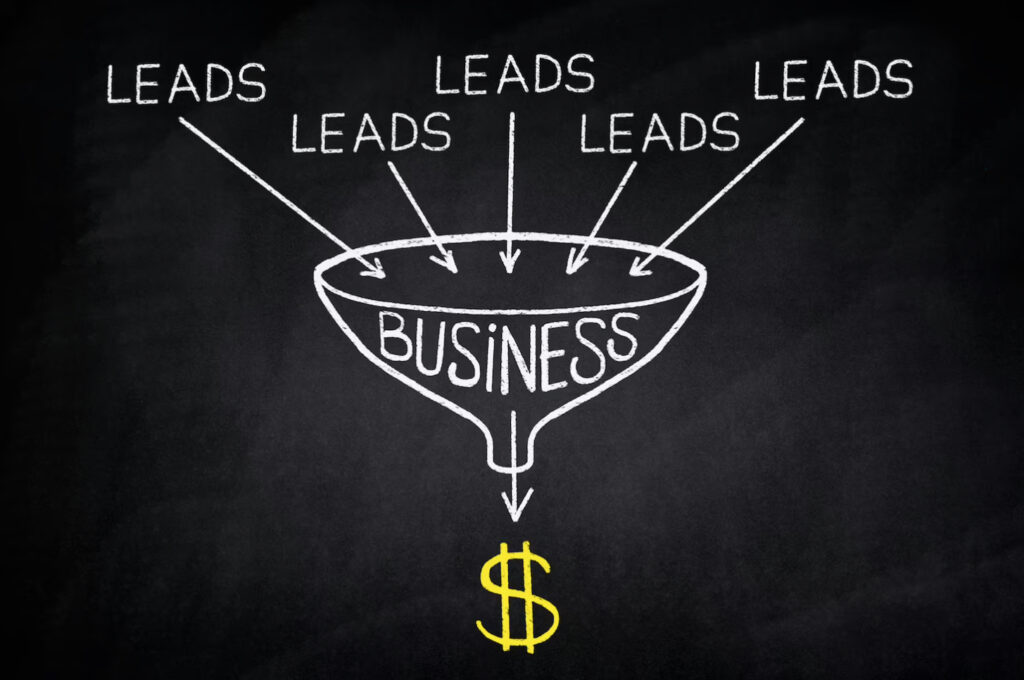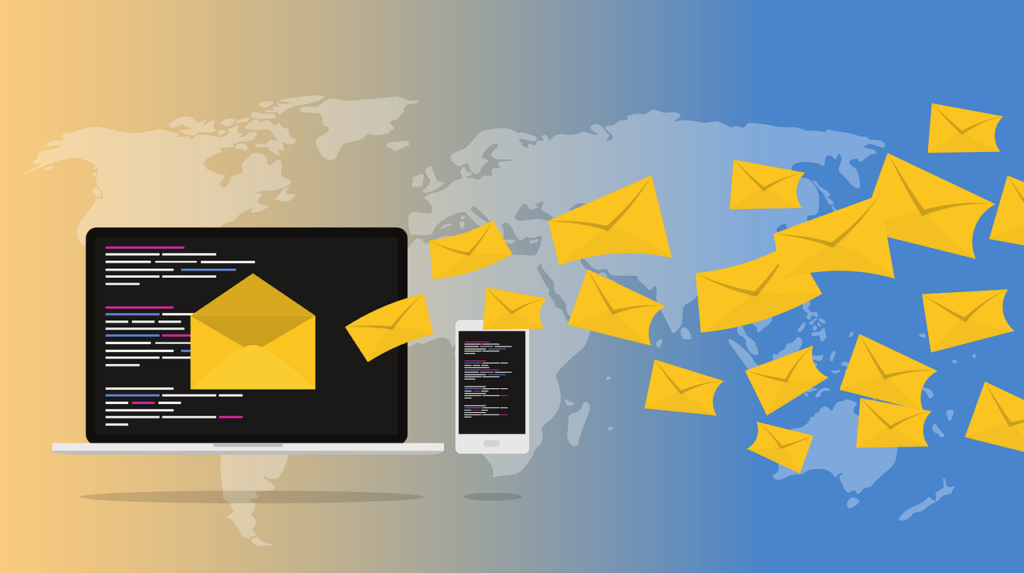Email marketing has emerged as a powerful tool in the modern business landscape, revolutionizing the way companies connect with their target audience. With its ability to reach a wide range of potential customers, email marketing plays a vital role in lead generation and nurturing.
In today’s digital era, where people are constantly connected to their email accounts, leveraging email marketing has become essential for businesses aiming to expand their customer base. Unlike other forms of marketing, email allows for direct and personalized communication with prospects, making it an effective channel for generating leads.
Email marketing serves as a catalyst for lead nurturing, enabling businesses to build relationships and engage with their audience at various stages of the buyer’s journey. Through carefully crafted email campaigns, companies can deliver valuable content, address pain points, and provide solutions that resonate with potential customers.
By employing strategic email marketing tactics, businesses can nurture leads, gradually guiding them towards making a purchase decision. By staying top-of-mind through consistent email communication, companies can establish trust and credibility with their prospects, ultimately increasing the likelihood of converting them into loyal customers.
In summary, email marketing has become indispensable in the modern business landscape. Its role in lead generation and nurturing cannot be overstated, as it allows businesses to engage with prospects directly, deliver targeted content, and cultivate relationships over time. By embracing the power of email marketing, businesses can unlock significant opportunities for growth and success.
Crafting Effective Email Campaigns for Lead Generation
- Segmenting your email list for targeted campaigns
Segmentation is a crucial aspect of crafting effective email campaigns for lead generation. By dividing your email list into distinct segments based on specific criteria such as demographics, interests, or previous interactions, you can tailor your messages to resonate with each group.
Segmentation allows you to send highly targeted and relevant content to different subsets of your audience. For example, you can send personalized emails to prospects in a particular geographic location or customize messages based on their interests or purchase history. By delivering content that aligns with their needs and preferences, you increase the chances of capturing their attention and driving them closer to conversion.
To implement effective segmentation, start by collecting relevant data about your subscribers. This can include information obtained through sign-up forms, surveys, or previous interactions. Use an email marketing platform that allows you to create segments based on the collected data and automate the process to ensure efficiency.
- Creating compelling subject lines and email content
Subject lines are the gatekeepers of your emails. They determine whether recipients will open and engage with your message or simply ignore it. Crafting compelling subject lines is essential for grabbing attention and enticing recipients to open your emails.
To create compelling subject lines, consider the following tips:
- Keep it concise and compelling: Aim for subject lines that are clear, concise, and intriguing. Use action-oriented language and emphasize the value or benefit of opening the email.
- Personalize when possible: Incorporate the recipient’s name or other relevant personalization elements to make the subject line feel more tailored.
- Experiment with urgency and curiosity: Consider using time-limited offers or posing intriguing questions to pique curiosity and encourage opens.
- A/B test subject lines: Test different subject lines with a subset of your audience to determine which ones yield higher open rates. Use the insights gained to optimize future campaigns.
Once recipients open your email, the content inside should be equally compelling. Create engaging and relevant content that speaks to the needs, pain points, or interests of your target audience. Use a conversational tone, include visuals if appropriate, and make the content scannable by using subheadings, bullet points, and concise paragraphs. End each email with a clear call-to-action that prompts recipients to take the desired action.
- Tips for increasing email open rates and engagement
Boosting email open rates and engagement is crucial for the success of your lead generation campaigns. Here are some effective tips to achieve this:
- Optimize send times: Experiment with different send times to identify when your target audience is most likely to engage with their emails. Analyze data and adjust your sending schedule accordingly.
- Ensure mobile responsiveness: With the increasing use of smartphones, it’s vital to optimize your emails for mobile devices. Ensure that your emails display properly and are easy to read on various screen sizes.
- Use compelling preheader text: The preheader text appears right after the subject line in an email client’s preview pane. Craft a compelling preheader that complements the subject line and provides additional context or incentive to open the email.
- Personalize your emails: Personalization goes beyond subject lines. Customize your emails with dynamic content, personalized recommendations, or relevant offers based on the recipient’s preferences or past interactions.
- Continuously test and optimize: A/B testing is a valuable tool for optimizing your email campaigns. Test different elements such as subject lines, CTAs, visuals, and email length to identify what resonates best with your audience.
By implementing these strategies, you can enhance the effectiveness of your email campaigns for lead generation, increasing open rates, engagement, and ultimately, conversions.
Lead Nurturing Strategies through Email Marketing
Lead nurturing is the process of building relationships with potential customers and guiding them through the buyer’s journey. By implementing effective lead nurturing strategies through email marketing, you can cultivate trust, establish credibility, and ultimately convert leads into paying customers.
Understanding the concept of lead nurturing: Lead nurturing involves consistently engaging with your leads over time, providing them with valuable information and resources, and addressing their pain points or challenges. The goal is to stay top-of-mind and build a relationship that positions your business as a trusted advisor. Rather than focusing solely on immediate conversions, lead nurturing takes a more long-term approach by gradually nurturing leads until they are ready to make a purchase.
Implementing automated email sequences for nurturing leads: Automated email sequences play a crucial role in lead nurturing. These sequences are a series of pre-planned emails that are sent to leads at specific intervals or triggered by certain actions. By setting up automated sequences, you can deliver relevant content and information to leads based on their stage in the buyer’s journey or their interactions with your previous emails.
To implement effective automated email sequences:
- Define your lead stages: Identify the different stages of your buyer’s journey, such as awareness, consideration, and decision. Determine the types of content and messaging that align with each stage.
- Map out the email sequence: Create a sequence of emails that progressively educate and nurture leads, moving them through the buyer’s journey. Start with broader educational content, then gradually introduce more targeted and promotional messages as leads move closer to making a purchase decision.
- Personalize the content: Tailor the content of your automated emails to address the specific pain points, challenges, or interests of your leads. Use dynamic content or personalization tokens to make the emails feel more personalized and relevant.
- Set up triggers and intervals: Define the triggers that will initiate the automated email sequence, such as subscribing to your newsletter, downloading a lead magnet, or visiting specific pages on your website. Determine the intervals between each email to ensure a consistent and timely flow of information.
Providing valuable content and building trust with subscribers: Delivering valuable content is crucial for effective lead nurturing. By providing information that educates, solves problems, or adds value to your leads’ lives, you establish yourself as a trusted source of expertise and build trust with your subscribers. Valuable content can include blog posts, guides, case studies, webinars, or exclusive offers.
To provide valuable content and build trust:
- Conduct audience research: Understand your target audience’s pain points, challenges, and interests. Use this knowledge to create content that resonates with their needs and provides solutions.
- Create a content plan: Develop a content plan that aligns with your lead nurturing goals. Plan educational content for early-stage leads and more promotional or product-focused content for leads closer to making a purchase.
- Diversify content formats: Experiment with different content formats such as articles, videos, infographics, or podcasts to cater to different preferences and engage your subscribers.
- Be consistent and relevant: Regularly send emails with valuable content to your subscribers. Ensure that the content is relevant to their interests and needs at each stage of the buyer’s journey.
- Encourage interaction and feedback: Invite your subscribers to engage with your content by asking for their opinions, encouraging them to reply to your emails, or hosting interactive sessions such as Q&A sessions or surveys.
By implementing these lead nurturing strategies through email marketing, you can build meaningful relationships with your leads, provide them with valuable content, and gradually guide them towards becoming loyal customers.
Optimizing Conversion Rates with Email Marketing
Email marketing plays a significant role in driving conversions, turning leads into paying customers. By optimizing your email marketing strategies, you can improve conversion rates and maximize the return on your email campaigns.
The impact of email marketing on conversion rates: Email marketing has a direct impact on conversion rates by engaging leads, nurturing relationships, and encouraging them to take the desired action. Emails provide opportunities to showcase products or services, offer exclusive promotions, and create a sense of urgency that prompts recipients to convert. By leveraging the power of email, businesses can guide leads through the conversion funnel and increase the likelihood of completing a desired action, such as making a purchase, signing up for a webinar, or requesting a consultation.
Techniques for improving email click-through and open rates: To improve email click-through and open rates, consider the following techniques:
- Compelling subject lines: Craft attention-grabbing subject lines that pique curiosity, create a sense of urgency, or offer a clear benefit to the recipient. A/B test different subject lines to identify the ones that resonate best with your audience.
- Personalization: Personalize your emails by addressing recipients by their name or incorporating other relevant personalization elements. This creates a sense of connection and increases the likelihood of engagement.
- Segmentation: Segment your email list based on relevant criteria, such as demographics, interests, or previous interactions. Deliver targeted content to specific segments, ensuring that the email content aligns with their needs and preferences.
- Engaging content: Create compelling and valuable email content that resonates with your audience. Use a conversational tone, incorporate storytelling techniques, and provide content that educates, entertains, or solves their problems.
- Clear and prominent CTAs: Include clear and prominent call-to-action (CTA) buttons or links in your emails. Make sure they stand out visually and use compelling language to encourage recipients to click and take the desired action.
- Mobile optimization: Optimize your emails for mobile devices to ensure they are easily readable and visually appealing on smartphones and tablets. A significant portion of email opens occur on mobile devices, so mobile optimization is crucial for engagement.
- Test and analyze: Continuously test different elements of your emails, such as layouts, visuals, copy, CTAs, and sending times. Analyze the performance metrics, such as open rates, click-through rates, and conversions, to identify trends and areas for improvement.
Importance of clear call-to-action (CTA) buttons and optimized landing pages: Clear and compelling CTAs are essential for guiding email recipients to take action and optimize conversion rates. When designing your CTAs, ensure they are visually distinct, use action-oriented language, and clearly state the benefit or outcome of clicking. Additionally, the landing pages that your CTAs lead to should be optimized to provide a seamless user experience. Ensure that the landing pages align with the content and expectations set in the email, load quickly, and have a clear conversion goal in mind. Streamline the conversion process by removing distractions and making it easy for recipients to complete the desired action, whether it’s making a purchase, filling out a form, or downloading a resource.
By implementing these techniques and optimizing your email marketing strategy, you can increase click-through and open rates, as well as enhance conversion rates. By engaging recipients with compelling content, clear CTAs, and optimized landing pages, you create a seamless journey that encourages them to convert and take the desired action.
Personalization and Automation in Email Marketing
Personalization and automation are two essential components of effective email marketing. They allow businesses to deliver highly targeted and relevant content to individual recipients, resulting in increased engagement, improved customer experiences, and higher conversion rates.
The significance of personalization in email marketing: Personalization in email marketing involves tailoring the content and messaging of emails to meet the unique needs, preferences, and behaviors of individual recipients. Personalized emails make recipients feel valued and understood, leading to higher open rates, click-through rates, and conversions.
Personalization can be achieved through various techniques, such as:
- Using recipient’s name: Addressing recipients by their name adds a personal touch and grabs their attention.
- Segmenting your audience: Divide your email list into segments based on specific criteria, such as demographics, interests, purchase history, or engagement levels. This allows you to send targeted content that resonates with each segment.
- Dynamic content: Incorporate dynamic content elements in your emails to customize the content based on the recipient’s preferences or past interactions. This can include personalized product recommendations, location-based offers, or tailored messaging.
- Behavioral triggers: Set up triggers that automatically send emails based on specific actions or behaviors taken by the recipient. For example, sending a follow-up email to a customer who abandoned their shopping cart or a personalized discount on a customer’s birthday.
By personalizing your emails, you can create a more meaningful and relevant connection with your recipients, leading to improved engagement and higher conversion rates.
Leveraging customer data to tailor emails for individual recipients: To tailor emails for individual recipients, businesses can leverage customer data to gain insights into their preferences, behaviors, and purchase history. By collecting and analyzing data, businesses can better understand their audience and create personalized experiences.
Here are some ways to leverage customer data for email personalization:
- Collect relevant data: Gather data through sign-up forms, surveys, website tracking, or purchase history. This data can include demographics, interests, browsing behavior, past purchases, or preferences.
- Analyze and segment: Use the collected data to segment your email list into smaller, targeted groups. This allows you to send more personalized content based on the specific needs and interests of each segment.
- Use automation and personalization tools: Employ email marketing platforms that offer automation and personalization features. These tools can help you automate email campaigns based on triggers or customer behavior, as well as dynamically populate email content with personalized information.
- Test and optimize: Continuously test different personalized elements in your emails, such as subject lines, CTAs, or content variations, to identify what resonates best with your audience. Monitor the performance metrics to measure the impact of personalization on engagement and conversions.
By leveraging customer data and tailoring emails to individual recipients, businesses can create more relevant and engaging email experiences, fostering stronger connections with their audience.
Benefits of email automation in saving time and improving efficiency: Email automation refers to the use of technology to automatically send emails based on predefined triggers or schedules. Email automation offers several benefits, including time savings, improved efficiency, and enhanced customer experiences.
Here are some key benefits of email automation:
- Time-saving: Automating repetitive tasks such as welcome emails, order confirmations, or follow-up sequences saves time and allows you to focus on other important aspects of your business.
- Consistency and timeliness: Automation ensures that emails are sent at the right time, consistently delivering relevant content to recipients. This improves customer experiences and engagement.
- Nurture leads at scale: Automation allows businesses to nurture leads effectively, delivering targeted content based on specific triggers or actions taken by recipients. This helps move leads through the buyer’s journey more efficiently.
- Personalization at scale: With automation tools, businesses can personalize emails for individual recipients on a large scale. Dynamic content and personalized elements can be incorporated to create tailored experiences without manual effort.
- Data-driven insights: Automation platforms provide valuable insights and analytics on email performance, allowing businesses to optimize their campaigns based on real-time data.
By embracing email automation, businesses can streamline their email marketing efforts, save time, and deliver personalized experiences at scale, resulting in improved efficiency and better overall campaign performance.
Incorporating personalization and automation into your email marketing strategy can significantly enhance customer engagement, increase conversion rates, and drive business growth. By leveraging customer data, tailoring content, and automating email campaigns, you can create meaningful connections with your audience and deliver the right message to the right person at the right time.
Conclusion
Email marketing plays a crucial role in lead generation and nurturing in today’s business landscape. It allows businesses to engage with their audience, deliver targeted content, and guide leads through the conversion funnel. By implementing the strategies and techniques discussed in this blog post, you can optimize your email marketing efforts and achieve better results.
It’s time to take action! Start segmenting your email list, personalizing your emails, and automating your campaigns. Measure the results, test different approaches, and refine your strategy based on data-driven insights. By leveraging the power of email marketing, you can generate more leads, nurture relationships, and drive business growth.
Remember, email marketing is a dynamic and ever-evolving field. Stay updated with industry trends, experiment with new tactics, and continuously refine your approach to stay ahead of the competition. Start implementing these strategies today and unlock the potential of email marketing for your business.


